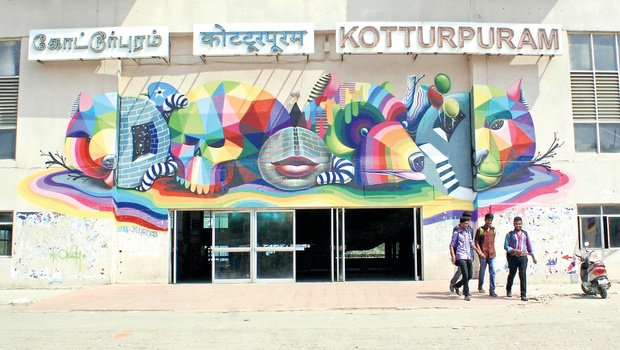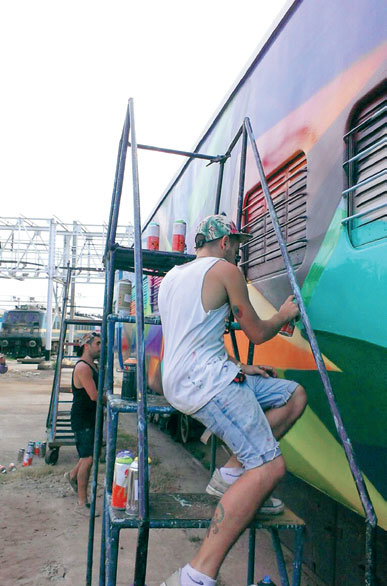
Chennai :
How does an organisation try to make a public space under its control vibrant and add character to a space frequented daily by lakhs of people, whilst addressing concerns of cleanliness? In the case of Southern Railways, they have opened their doors to any professional artists willing to exude creativity on the many walls of their stations across the Chennai division, as well as a special inspection coach.
Walls at terminal stations like Chennai Central, Egmore and MRTS stations at Greenways Road and Kotturpuram became canvases for painters participating in the Max Mueller Bhavan’s ‘Conquer the Concrete — Chennai’s First Street Art Festival.’ In addition, a Spanish painter sprayed the Divisional Railway Managar’s inspection coach with psychedelic colours as part of the festival.
“We were looking for people for this as we had linked it to the Swachh Bharat Abhiyan. Fortunately, the institute contacted us at the same time,” said Gayathri, the Senior Divisional Commercial Manager, Chennai Division, Southern Railway.
Railway walls, traditionally, are utilised for either sticking posters, attaching banners or worse, as spots for people to relieve themselves of urine or paan-laced spit. Art on walls would at least discourage such activities and help in keeping the premises clean, Gayathri felt. Colourful walls with depictions would also come as a welcome change for the passengers as compared to those with a single hue.
According to Samyukta, project manager of the Street Art festival, painting in railway stations which are frequented by all sections of society worked to the advantage of the artists. “Many strangers would come up to the artists and give suggestions; a folktale narrated by a commuter was the inspiration for the giant cat painting at Egmore station,” she said.
Another artist portrayed his interpretation of the railway station as a place where only parts of the human body like legs and hands, and not faces, were visible, Samyukta said.
The official website of the festival says that the rationale behind the festival was to make art accessible by showcasing it in the heart of the city as opposed to a closed art gallery and thereby reaching a broader section of the public. The goal was to not only portray urban development and its associated challenges in Chennai but also to enlighten the need for public participation. Railway stations are probably the only public spaces which fulfill both the conditions, as well as give the visibility to the artists’ output.
An additional shot in the arm came in the form of interest shown by station-level railway officials. Seema Kumar, a professor at National Institute of Fashion Technology (NIFT) who has painted one wall at Chennai Central, says that the station managers are very attached to the buildings and see it as their personal space. “They understood the importance of this exercise and enthusiastically gave a lot of suggestions as well,” she said.
The Chennai division wants to take this movement forward and Gayathri said that they were willing to give out spaces to any interested artists. Already, students of NIFT are in talks to paint another wall at Central. “We were also wondering if any paint company would come forward and sponsors the cost of the paint,” she said.
source: http://www.newindianexpress.com / The New Indian Express / Home> Cities> Chennai / by Siddharth Prabhakar / February 19th, 2015
